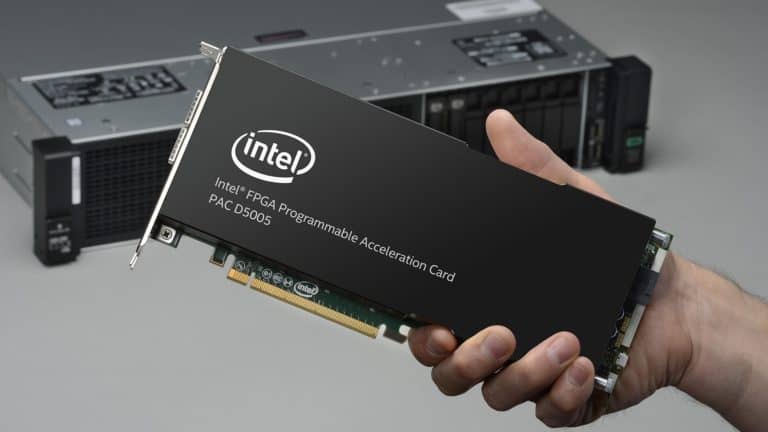Intel has introduced the PAC D5005. This is a new accelerator card that allows servers in data centers to run workloads such as analytics and artificial intelligence (AI) software simultaneously.
An accelerator card can be placed in a server to supplement the built-in processor. However, the D5005 distinguishes itself from the competition because it is not built to speed up a specific type of workload, writes Silicon Angle. Instead, the card can be programmed to be used for different applications.
Patrick Dorsey, head of Intel’s Programmable Solutions Group, explains that there are a number of specific use cases that Intel has in mind. According to him, the card is very good for streaming analytics, for media transcoding and for AI workloads.
The card can also be used to speed up network security and financial software.
Improvements
The D5005 is a big improvement over Intel’s previous programmable accelerator. This card has 32 GB of memory, four times more than its predecessor. Also, the map comes with twice as many programmable circuits that companies can customize for their workloads.
The D5005 has two 100 Gigabit Ethernet ports, compared to the single 40 Gigabit port of its predecessor. With the new ports, the card can take data faster.
The D5005 is controlled by a Xeon server CPU and a Stratix 10 SX field-programmable gate array. This last chip provides the circuits to be configured at the heart of the accelerator. The Xeon processor handles the more general tasks.
HPE server
The D5005 will initially be available for the Hewlett Packard Enterprise ProLiant DL380 Gen10 server.
Several other server manufacturers are now working on certifying systems to work with the product. It is unclear which manufacturers they are.
This news article was automatically translated from Dutch to give Techzine.eu a head start. All news articles after September 1, 2019 are written in native English and NOT translated. All our background stories are written in native English as well. For more information read our launch article.